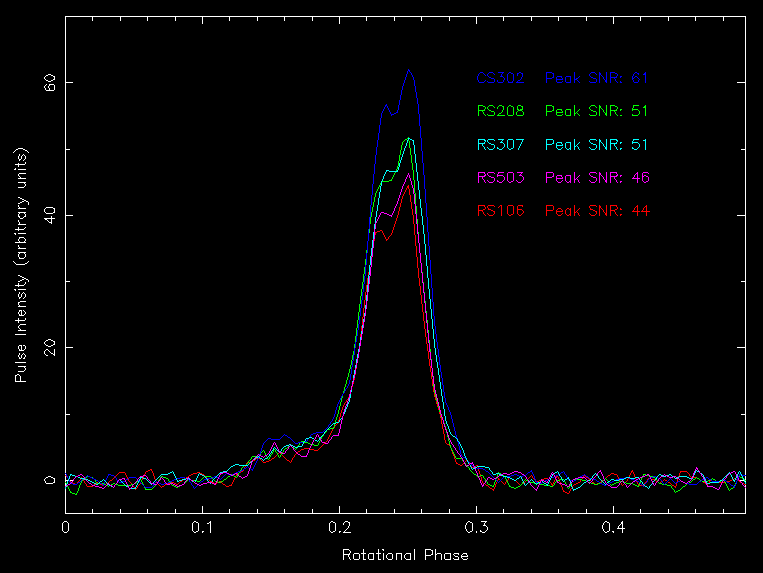Daily Image
16-12-2009The importance of LOFAR HBA station calibration
| Submitter: | Jason Hessels (LOFAR Pulsar Working Group) |
| Description: | Properly calibrating the LOFAR stations themselves, so that the antennas are summed with the correct phase delays, is crucial for achieving the maximum sensitivity of LOFAR. Calibration of the HBA stations is still in the early stages, but we can already measure how important this effect is. The figure shows a 15-minute observation of the bright pulsar B0950+08. The signals from 5 of the Dutch LOFAR stations were recorded simultaneously but kept separate and the total power (Stokes I) from each station beam was folded after correcting the subbands for dispersion. What is shown is the sum of all the pulses detected during the observation. Only half the rotational phase of the pulsar is shown. Each of the profiles has been scaled so that the off-pulse noise has a standard deviation of 1. This is done to show that the signal-to-noise ratio of the detection varies between stations. In other words, the yet-uncalibrated stations effectively have different sensitivities. As can be seen, the loss in sensitivity is 20-40% compared with the most sensitive station. To a large degree, this difference is because of variable cable lengths connecting antennas, an effect that will be compensated for by a proper calibration. CS302 happens to give the best results right now because the cable lengths used for that station are more uniform than in the case of the remote stations. With the proper station calibration - currently being worked on by Stefan Wijnholds and others - we expect all stations to have very similar sensitivities and to reap the full benefit of LOFAR's enormous collecting area. The good news is: these already impressive data will only be getting better! |
| Copyright: | LOFAR/JWTH |
| Tweet |  |
